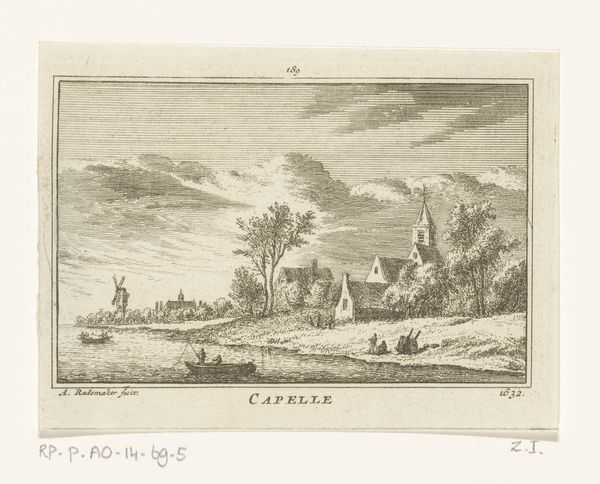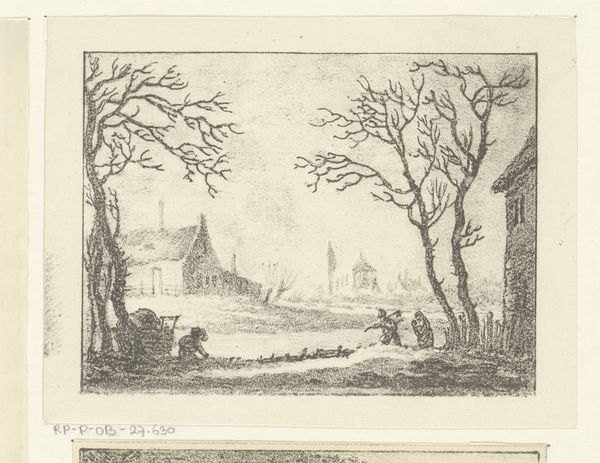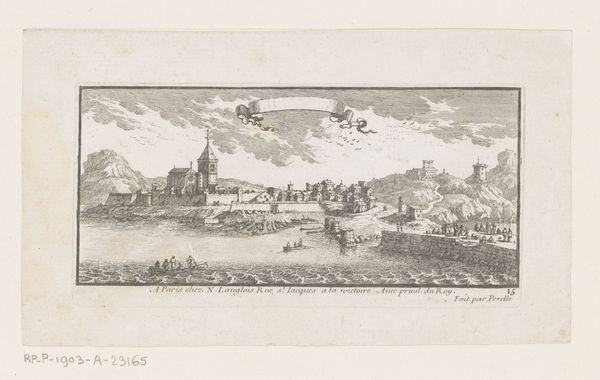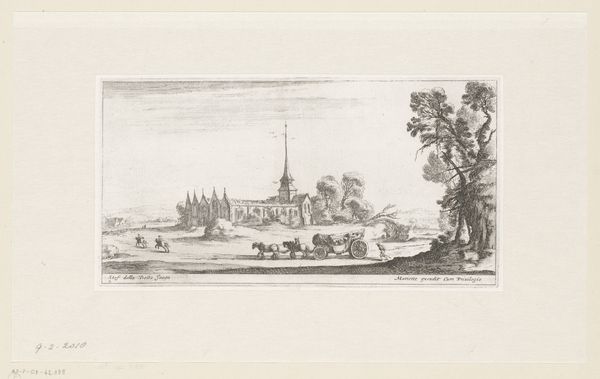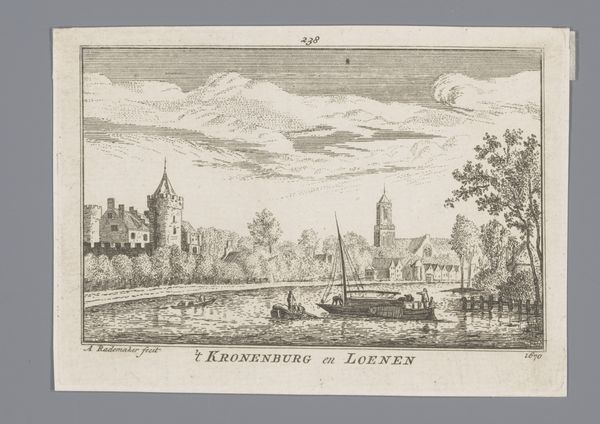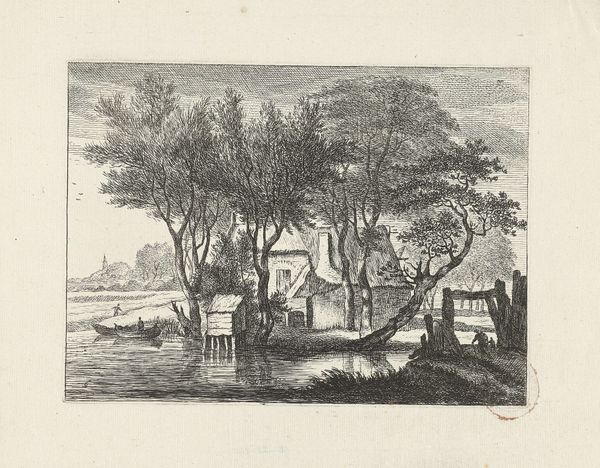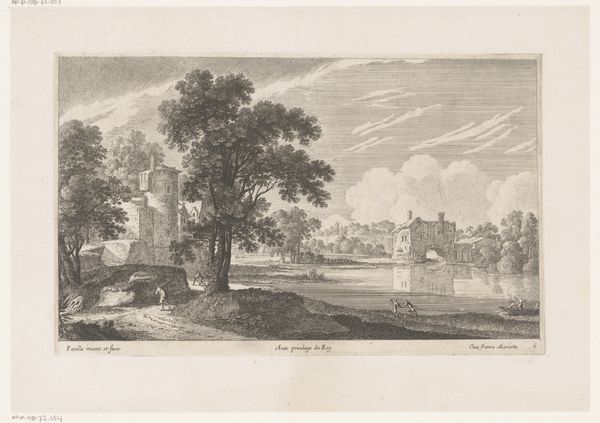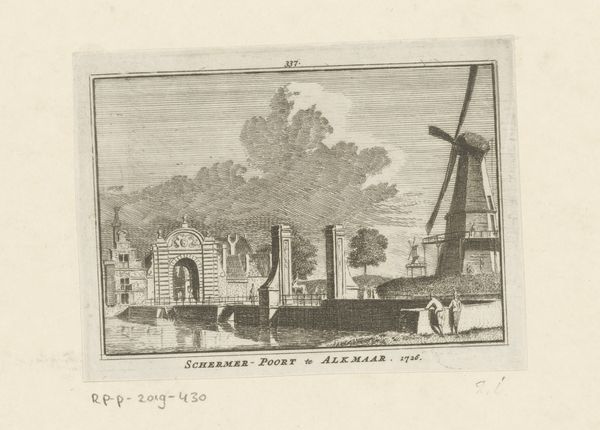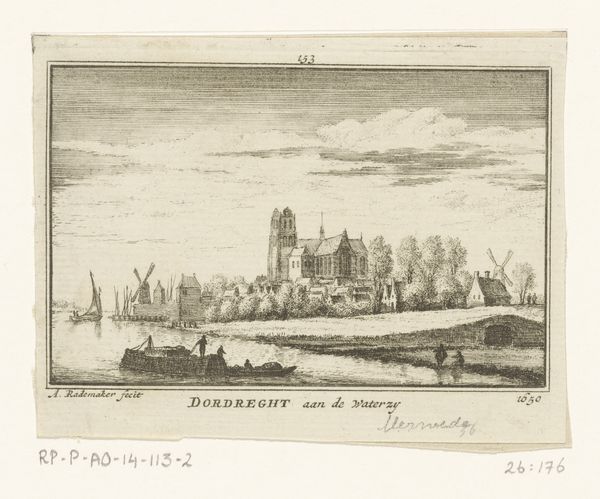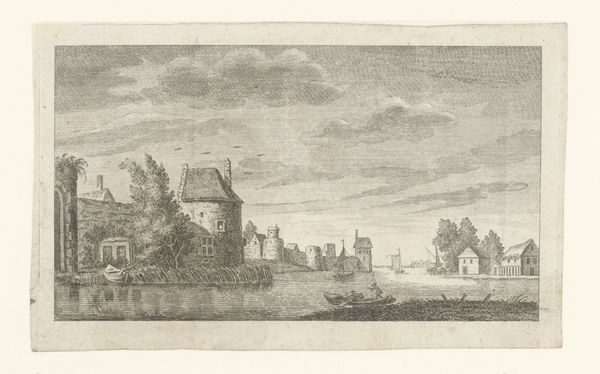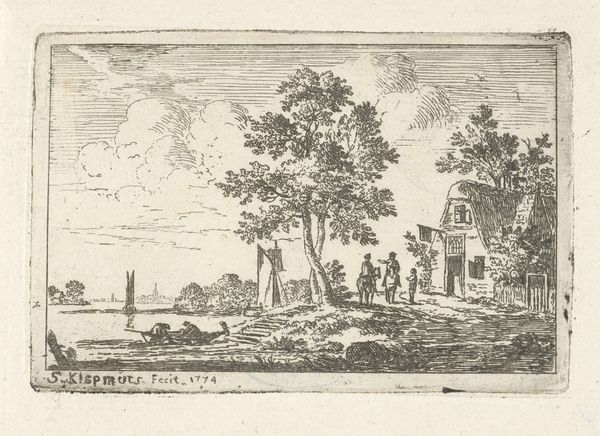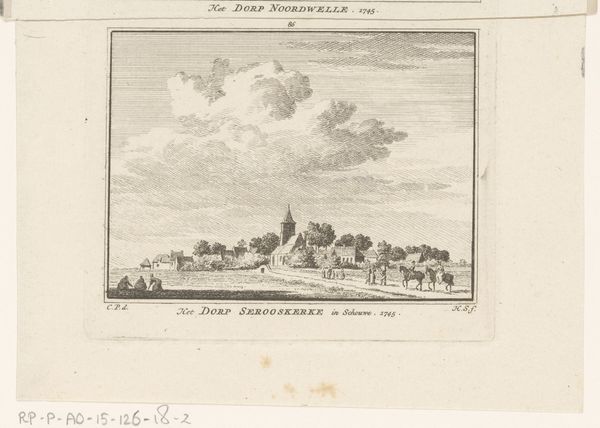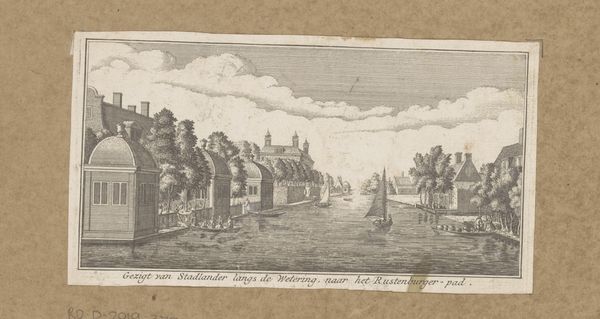
Dimensions: height 81 mm, width 108 mm
Copyright: Rijks Museum: Open Domain
Curator: This is Abraham Rademaker's "Gezicht op Overschie," an etching created sometime between 1725 and 1803, and part of the Rijksmuseum's collection. Editor: It’s such a tranquil scene. The muted tones and precise lines evoke a sense of serene simplicity. It gives off this very understated and gentle atmospheric feel, doesn't it? Curator: Indeed. Rademaker's skillful manipulation of the etching process allowed him to capture the quiet rhythms of Dutch life. It is the kind of image that reminds us of how landscape depictions like this reinforced local identity. Consider the materiality here. The use of etching enabled printmaking with a reproducible distribution that played a critical role in shaping a sense of place and belonging during the Dutch Golden Age. Editor: Right. Etchings democratized images. They were cheaper to produce and purchase compared to paintings, which meant that more people had access to art. This image shows a rather idealized vision of rural labor with people shown enjoying water transport and daily work alongside a church. Were prints like this targeted toward a rising middle class eager to own scenes showing elements of Dutch Golden Age culture? Curator: I believe so. Prints, including etchings like this one, were definitely produced with the intent of broad distribution across all emerging segments of society. They served the critical social function of shaping perceptions. Also consider the art market. Editor: And I see that even the choice of depicting a specific village plays into that as well. Rademaker likely understood there was a market for specific landscapes that people identified with personally, maybe people commissioned views of their native area. The work operates within the framework of both landscape and genre art. Curator: Precisely. What may seem like a straightforward landscape scene also highlights the evolving commercialization and public function of art in Dutch society at the time. The means of its production enabled mass distribution and the content, as you pointed out, played a vital role in reinforcing the social order of things. Editor: This etching, then, encapsulates not only artistic technique but the burgeoning culture of art consumption that defines an era. Curator: And it stands as a small, quiet reminder that how and why something is made matters as much as what is depicted.
Comments
No comments
Be the first to comment and join the conversation on the ultimate creative platform.
